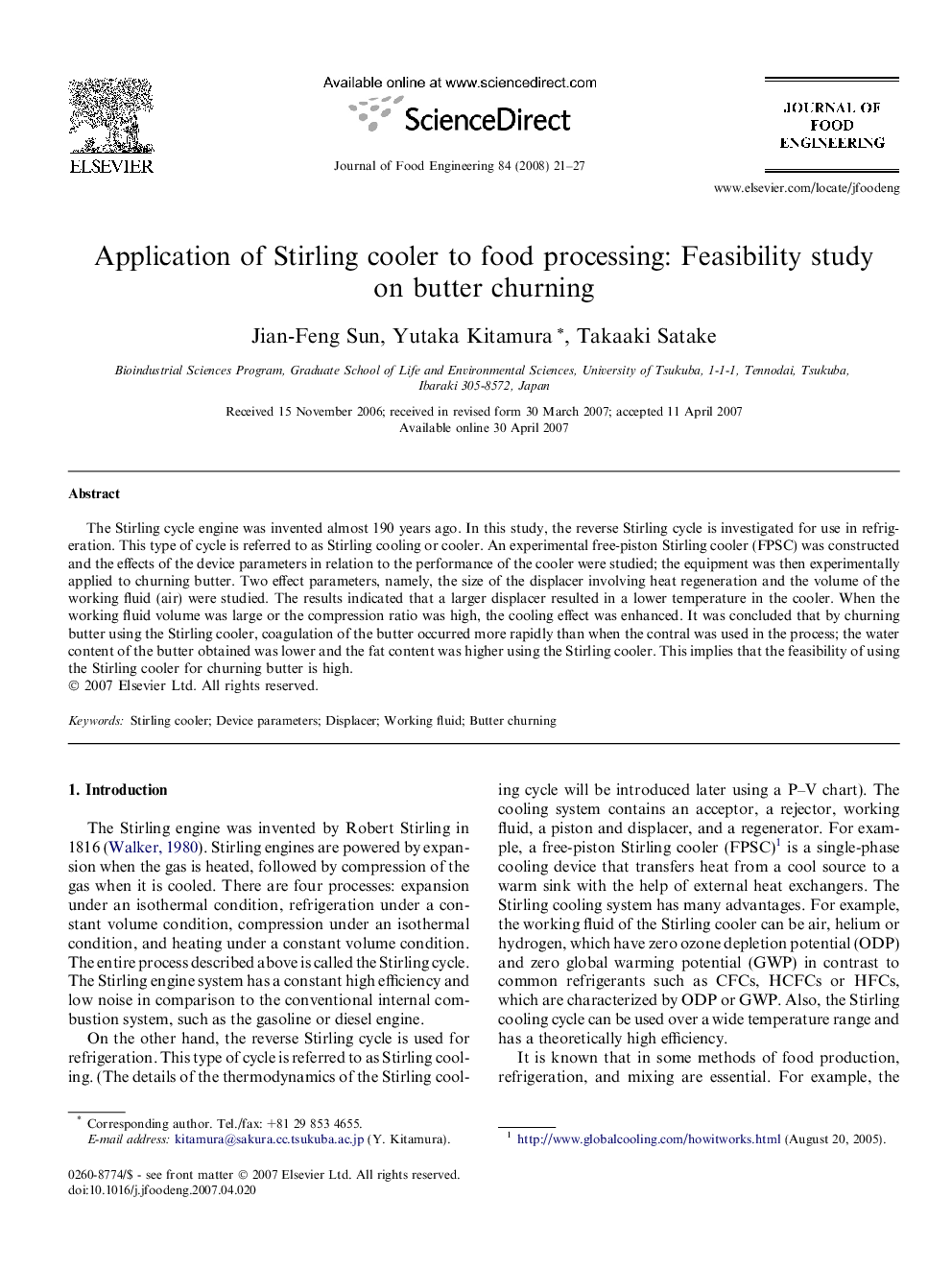| Article ID | Journal | Published Year | Pages | File Type |
|---|---|---|---|---|
| 224532 | Journal of Food Engineering | 2008 | 7 Pages |
The Stirling cycle engine was invented almost 190 years ago. In this study, the reverse Stirling cycle is investigated for use in refrigeration. This type of cycle is referred to as Stirling cooling or cooler. An experimental free-piston Stirling cooler (FPSC) was constructed and the effects of the device parameters in relation to the performance of the cooler were studied; the equipment was then experimentally applied to churning butter. Two effect parameters, namely, the size of the displacer involving heat regeneration and the volume of the working fluid (air) were studied. The results indicated that a larger displacer resulted in a lower temperature in the cooler. When the working fluid volume was large or the compression ratio was high, the cooling effect was enhanced. It was concluded that by churning butter using the Stirling cooler, coagulation of the butter occurred more rapidly than when the contral was used in the process; the water content of the butter obtained was lower and the fat content was higher using the Stirling cooler. This implies that the feasibility of using the Stirling cooler for churning butter is high.
